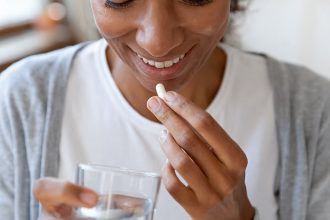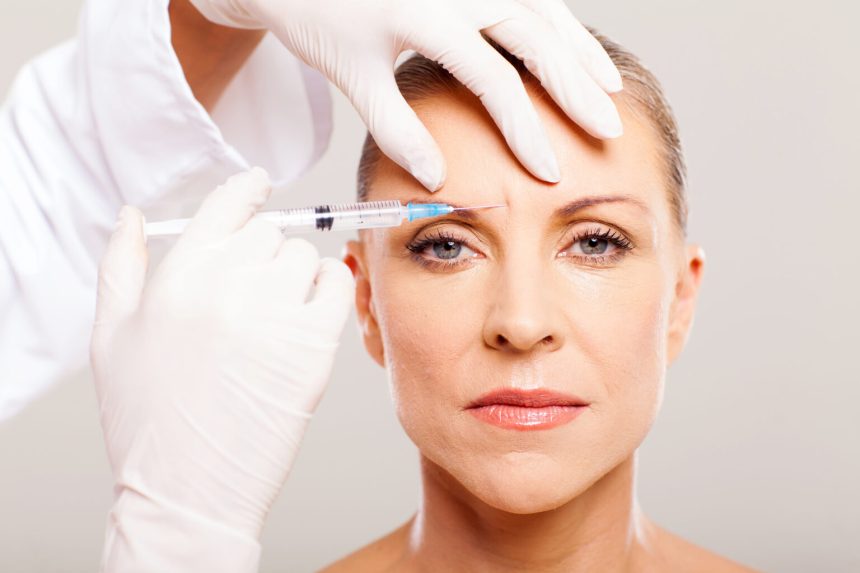If you’re concerned about frown lines or crow’s feet, you may be curious: Can Botox actually prevent wrinkles, and if so, how?
The answer is positive: Botox injections can indeed help prevent certain types of wrinkles. However, before scheduling a Botox session, it’s important to understand how it functions, whether it’s suitable for your needs, and the potential implications of discontinuing treatments.
We’ve delved into the scientific research and sought advice from a board-certified dermatologist regarding preventive Botox. Here’s everything you should be aware of.
How Does Botox Stop Wrinkles in Their Tracks?
Dr. Quynh-Giao Sartor, MD, FAAD, a board-certified dermatologist in Houston, TX, explains that Botox prevents wrinkles by inhibiting the release of acetylcholine, a neurotransmitter responsible for muscle contraction. This temporary paralysis of face-creasing muscles prevents the formation of new wrinkles.
Botox is primarily used to prevent dynamic rhytides, or wrinkles formed by repetitive facial movements. It may also have some effect on static wrinkles caused by gravity and loss of elasticity. Over time, individuals who undergo repeated Botox injections in the same area may notice reduced wrinkles even at rest.
However, Botox is not a permanent solution. Dr. Sartor advises that it takes 1 to 2 weeks post-injection to observe the effects, and the paralysis is temporary, with expression lines gradually returning 3 to 6 months after treatment.
When Should You Consider Preventive Botox?
According to Sartor, individuals in their mid-to-late 20s who start noticing dynamic wrinkles can contemplate Botox as a preventive measure. Since wrinkles develop over time, initiating preventive Botox before these lines become deep-set furrows is often recommended.
It’s essential to base this decision on your personal skincare goals and individual skin requirements rather than solely on reaching a particular age milestone.
Is preventive Botox right for you?
Let’s be real, deciding whether to go for preventive Botox is a personal call. It’s all about what feels right for you.
The main perks of Botox include wrinkle prevention and softening existing lines. But here’s the deal: It’s not a one-time fix. The effects fade within a few months, so if you’re into the results, you’ll need to weigh the cost – ranging from $150 to $1600 per session – for repeat treatments. Starting in your mid-20s could mean a whole lot of appointments if you decide to stick with it.
Gimme more Botox, pls
Botox is gaining popularity, with a noticeable increase in usage among individuals in their 20s and 30s, as reported by the American Society of Plastic Surgeons in 2017.
This trend intrigued Dana Berkowitz, a gender studies professor at Louisiana State University, leading her to delve into the phenomenon in her book, “Botox Nation: Changing the Face of America.” Berkowitz explores the surge in Botox usage and highlights how marketing strategies target young women, potentially shaping them into lifelong consumers.
However, when it comes to Botox, the decision is entirely yours—it’s your face, after all! If you’re considering treatment, it’s crucial to seek out a reputable dermatologist or medical aesthetics provider with credentials and a solid track record.
During your initial consultation, Sartor recommends discussing:
- Biological age
- Skin quality and complexion
- Lifestyle factors
- Personal aesthetic preferences
Open communication with your provider allows them to tailor the treatment to your specific goals and needs.
What happens if you stop treatment?
If you discontinue Botox treatment, the clinical effects typically wear off within 3 to 6 months. This means that without regular sessions, your wrinkles will gradually revert to their baseline appearance, as explained by Sartor.
Safety First
When considering any skincare treatment, it’s crucial to prioritize safety and be aware of potential side effects. For instance, pregnant or nursing individuals should avoid Botox injections.
Side effects often stem from unintended toxin spreading, which varies depending on the injection site:
- Double vision
- Swelling
- Headache
- Nausea
- Fatigue
If anyone experiences difficulty breathing, swallowing, or speaking after Botox, immediate medical attention is necessary.
Lastly, adhering to aftercare instructions is essential for optimal results and to prevent complications.
Other Ways to Reduce Signs of Aging
There are numerous methods to diminish signs of aging. Here are a few:
- Microneedling: This procedure stimulates collagen production by creating micro-wounds with a specialized tool, aiding in the reduction of acne scars, stretch marks, and fine lines.
- Chemical Peels: Using chemical exfoliants, chemical peels address various skin concerns, including fine lines and wrinkles.
- Retinol: Known for its anti-wrinkle properties, retinol improves skin texture by promoting cell turnover and collagen production, while also reducing uneven pigmentation.
- Sunscreen: Sartor emphasizes the importance of daily broad-spectrum SPF 30 or higher sunscreen application, as sun exposure significantly contributes to wrinkle formation.
FAQs
What age should you start Botox?
There isn’t a specific age for starting Botox; individuals may begin treatments in their mid-20s or later, depending on their goals.
Do you get more wrinkles after Botox?
According to Sartor, a board-certified dermatologist, it’s not common to experience increased wrinkles post-Botox.
Does Botox slow aging?
While Botox doesn’t halt aging, it can slow its appearance by addressing dynamic wrinkles and preventing their permanence.
Bottom Line
Botox can effectively prevent wrinkles, but maintaining results requires regular treatments every 3 to 6 months. Additionally, alternative methods like microneedling, chemical peels, sunscreen use, and retinol application are viable options for wrinkle prevention and reduction.










